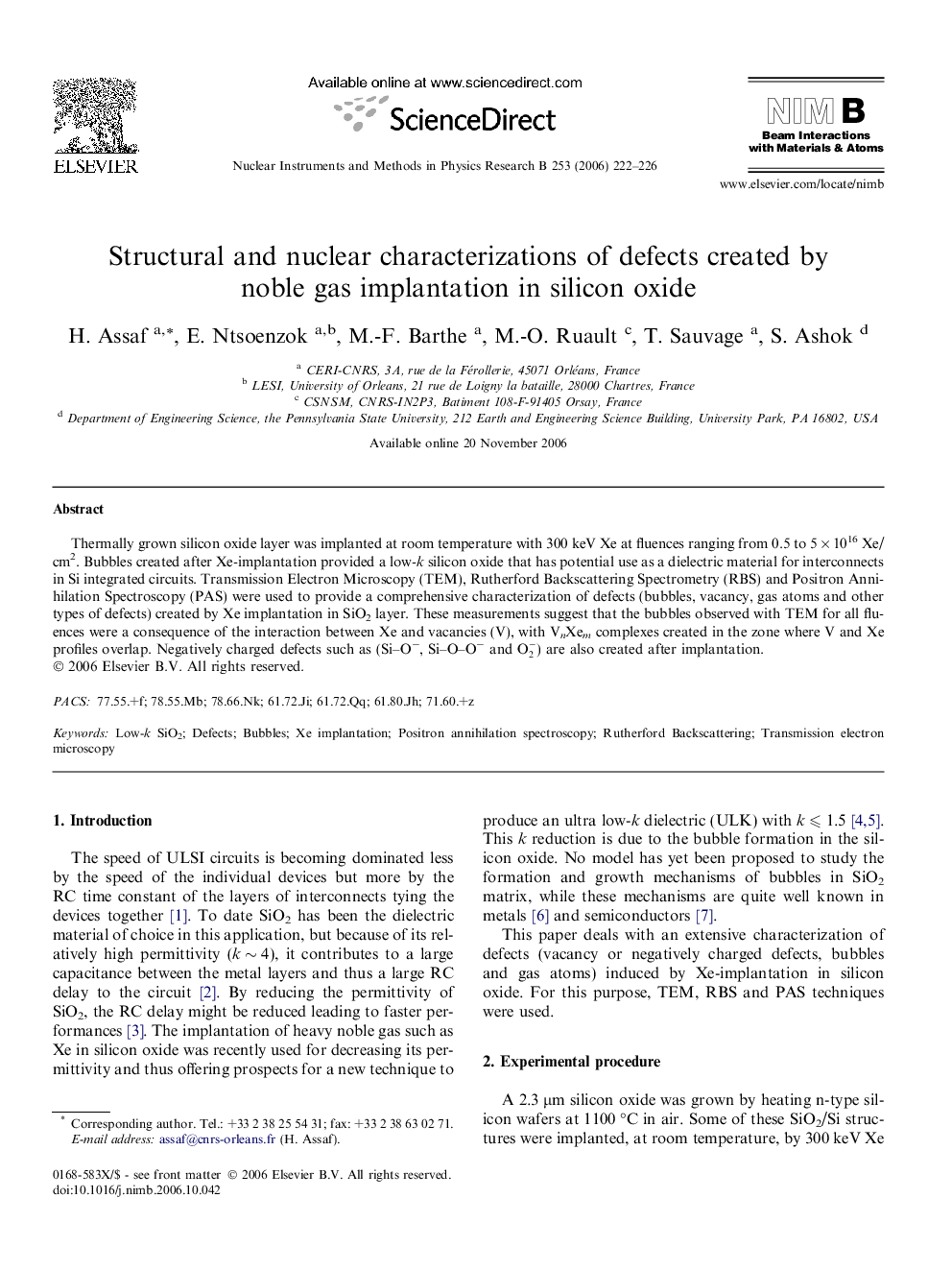| Article ID | Journal | Published Year | Pages | File Type |
|---|---|---|---|---|
| 1687955 | Nuclear Instruments and Methods in Physics Research Section B: Beam Interactions with Materials and Atoms | 2006 | 5 Pages |
Thermally grown silicon oxide layer was implanted at room temperature with 300 keV Xe at fluences ranging from 0.5 to 5 × 1016 Xe/cm2. Bubbles created after Xe-implantation provided a low-k silicon oxide that has potential use as a dielectric material for interconnects in Si integrated circuits. Transmission Electron Microscopy (TEM), Rutherford Backscattering Spectrometry (RBS) and Positron Annihilation Spectroscopy (PAS) were used to provide a comprehensive characterization of defects (bubbles, vacancy, gas atoms and other types of defects) created by Xe implantation in SiO2 layer. These measurements suggest that the bubbles observed with TEM for all fluences were a consequence of the interaction between Xe and vacancies (V), with VnXem complexes created in the zone where V and Xe profiles overlap. Negatively charged defects such as (Si–O−, Si–O–O− and O2-) are also created after implantation.
